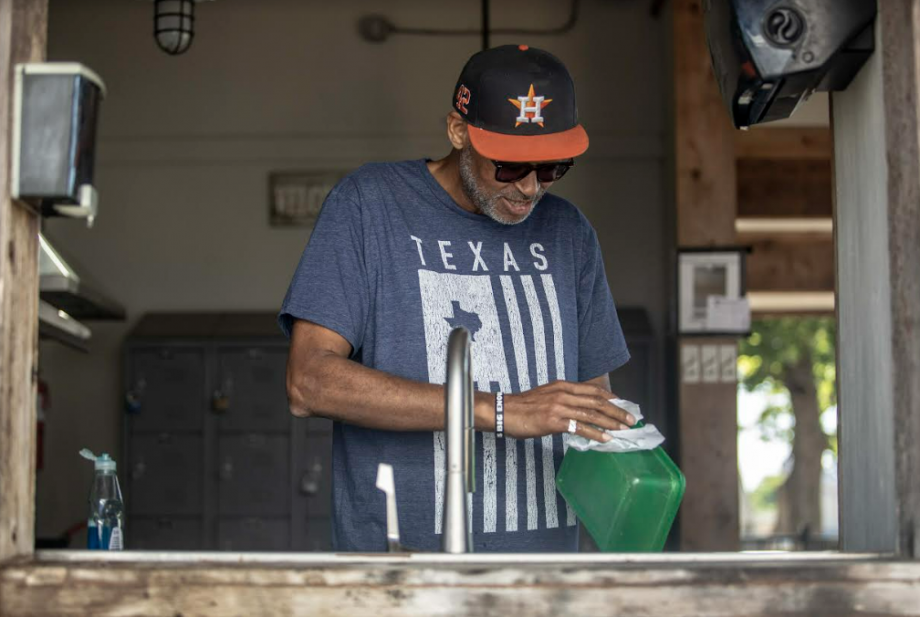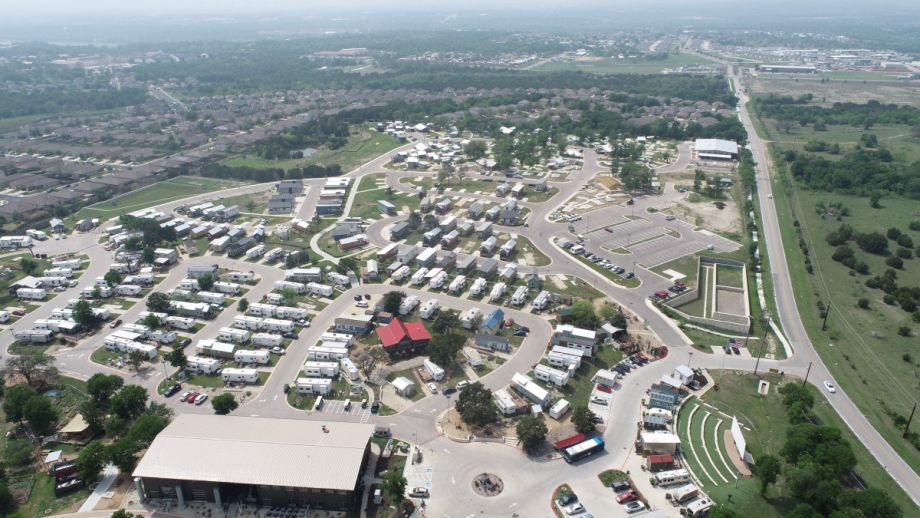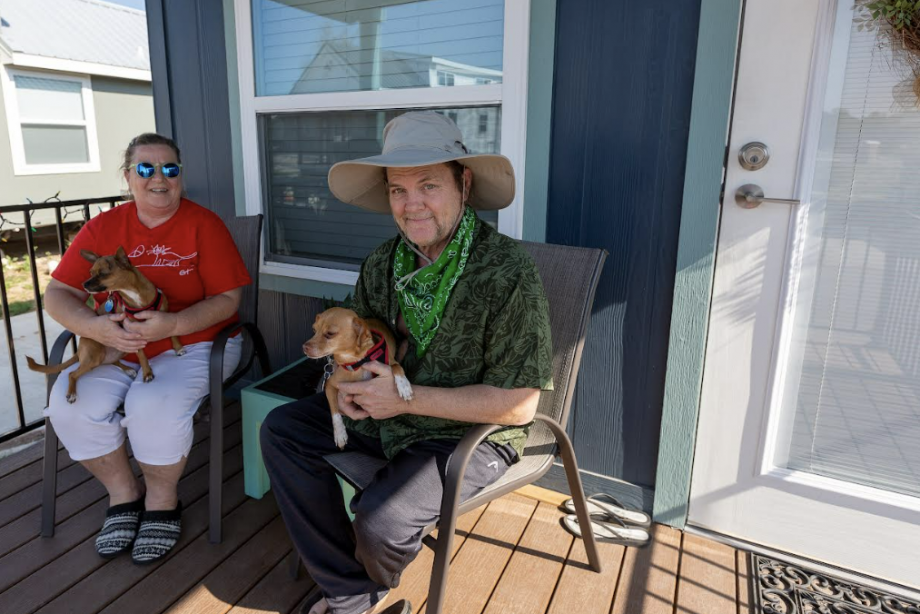This story was originally published by Next City. It is part of the SoJo Exchange from the Solutions Journalism Network, a nonprofit organization dedicated to rigorous reporting about responses to social problems.
When Alan Graham refers to the residents of Community First! Village as “neighbors,” he’s speaking to the community created in this enclave of tiny homes, microhomes and RVs soon to expand beyond its 51-acre plot in East Austin.
Graham, a former real estate developer who launched the faith-based social outreach ministry Mobile Loaves & Fishes in 1998 to serve Austin’s homeless community, conceived of the neighborhood as a way to help people transition from chronic homelessness.
“I started developing pretty deep relationships with men and women out on the streets,” Graham says of his work. “In 2003, I started spending the night out on the streets. I’ve personally spent about 250 nights there.”
In that time, he learned about the work ethic of people living out on the streets, negating the stereotypes about laziness and homelessness that people harbor. The greatest cause of homelessness, he believes, is “a profound, catastrophic loss of family” — sometimes through suffering unthinkable abuses, including forced drug use and sex trafficking while living with parents and other so-called caretakers.

“I learned that the greatest yet most ineffective entrepreneurs on the planet are the panhandlers standing on the street corners, relegated to doing the only thing that we allow them to do now, which is the First Amendment free speech right to beg,” Graham says.
Nearly 350 individuals formerly experiencing homelessness reside in the village, which provides permanent housing and sits just outside Austin’s city limits (in Texas, MLF notes, there is no discretionary land use authority outside municipal boundaries, meaning the village faced no zoning issues). As of March, the village’s retention rate for residents is about 88 percent. Through a series of new investments, Community First plans to soon triple its footprint.
Graham started the village by helping set up one homeless man with an RV to live in. Then he did the same for several others. By 2012, he secured 27 acres of land to build what became the neighborhood’s initial phase. It’s since grown to a community of about 350 occupied units, mostly single-occupancy, though there are some couples among the formerly homeless residents. About 50 people drawn to missionary work have also moved in, and are volunteering in the neighborhood they’ve joined.
MLF bills Community First! Village as “the country’s only master-planned development designed specifically for men and women coming out of chronic homelessness,” but Graham and his wife call it something else: Home.

They live in a modest Community First home among their formerly homeless neighbors — a stark contrast from the tony Westlake neighborhood where they lived for 34 years while Graham worked in real estate. Graham declares Community First to be the best neighborhood he’s ever lived in.
Community First launched as a primarily private venture, with Graham lining up angel investors to seed the vision and partnering with companies to create houses and provide needed materials for maintenance and upkeep.
A $36.6 million grant from the Michael and Susan Dell Foundation, announced last December, will anchor MLF’s plans to create an additional 1,400 homes for the homeless through a $150 million capital campaign, calling it “a significant next step in delivering upon our broader Ten Year Plan to Mitigate Homelessness in Austin.”
Crushed by negative news?
Sign up for the Reasons to be Cheerful newsletter.The city of Austin is now stepping in with fee waivers totaling more than $4 million for the planned next phases of MLF’s community building work, but even today, the upcoming phases will be largely donation-driven.
The community itself generated $1.2 million last year through the various micro-businesses MLF has established in the village, employing a number of its residents in the process.
Community First has an art studio — including two kilns for firing pottery and a jewelry-making station leading to a collaboration with famed Austin jewelry magnate Kendra Scott — that creates revenue for MLF and provides artists in the community a creative outlet.

The village also has what is essentially a tiny home hotel created near its entrance, serving as vacation rentals for people visiting Austin, with residents serving a range of roles to help operate it. There’s even an auto shop on site where people can bring their cars in to be repaired or get annual state inspections required for vehicle registration.
Residents are expected to pay their way, though rent and utilities are scaled to enable homeless people to transition into life at Community First! Village — once they get through the three-step process to be admitted.
First, a prospective applicant goes through a coordinated assessment with one of several Austin-based homeless-serving agencies that MLF partners with, determining that the applicant is chronically homeless and living in Travis County for at least one year.
Community First residents average nine years on the streets before getting into their homes, and according to Graham’s estimate, anywhere from 70 to 80 percent are receiving either federal disability, social security or veterans’ benefits. Community First doesn’t require residents to abstain from drugs and alcohol; Graham reasons that “the United States government, having spent trillions of dollars, can’t figure that deal out.”
Step two involves the prospective applicant touring the neighborhood to determine if they want to live there. Finally, if the person wants to apply, they fill out an application and join the waiting list. Each new house is furnished and is even decorated with the resident’s preferred color palette and tastes. And once a resident is in, that person can stay as long as they can maintain their rent and utility payments and live civilly amongst their new neighbors.
A manufactured tiny home, which would take an applicant about a year to get into, will cost a resident $440 a month; a microhome, taking just a few months to become available, runs about $380 with utilities. Each microhome has a bed, fridge and microwave but not a kitchen or a bathroom; those residents use communal outdoor kitchens, as well as bathrooms and showers that individually lock, located in hubs near the microhomes.
Graham advises those who are living in microhomes to conceive of those as just the bedrooms of a larger house expanding out into those communal areas. With a health clinic and a small food store in the neighborhood, a new gathering space called The Living Room about to open, and a weekly farmers’ market where food grown in the neighborhood is distributed to residents, MLF is aiming to be as complete as it can for its residents.
Through a partnership with Austin’s famed Alamo Drafthouse Cinema chain, the village also boasts an outdoor ampitheater where residents and the general public can take in movie screenings (with concessions run by village residents).
Some even make Community First their eternal resting place. There’s a columbarium on site where 24 residents were interred after their passing, and additional columbariums will be added to the memorial site soon.
“We’re instilling and putting back the basic building blocks of one being able to live,” says Thomas Aitchison, MLF’s director of communications, “so they are afforded the same access to essential and basic functions in life.”
And those building blocks include human relationships, enabled by the volunteers that come to the neighborhood to keep it not only functioning. Though the pandemic required a temporary stop to volunteers coming to Community First, they’re back now and giving the neighborhood additional vitality.
“We’ve created a destination for people to serve,” Graham says. “Prior to Community First! Village, if you have a heart for serving, if you have a heart for the homeless, your options are quite limited. We provide a destination, so it’s here now, and people come to us, as they find out about it, it’s that proverbial snowball going down the hill … we get to contrast between hopelessness and hopefulness.”







